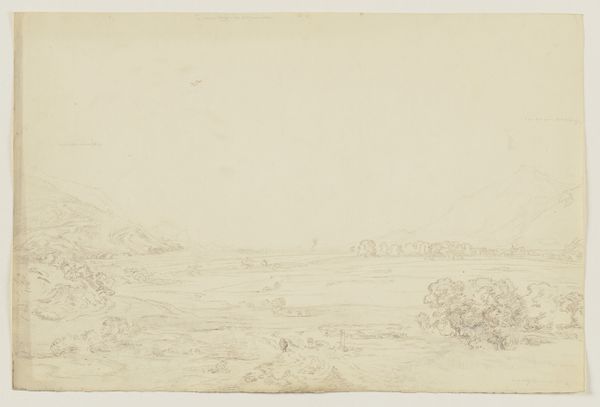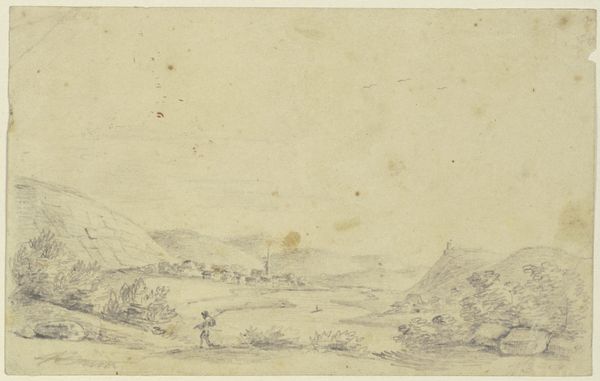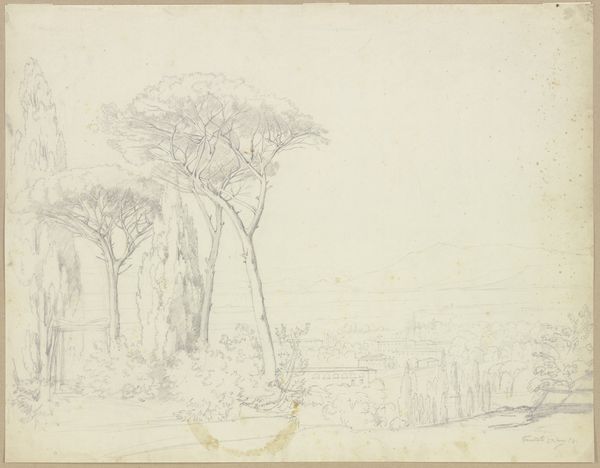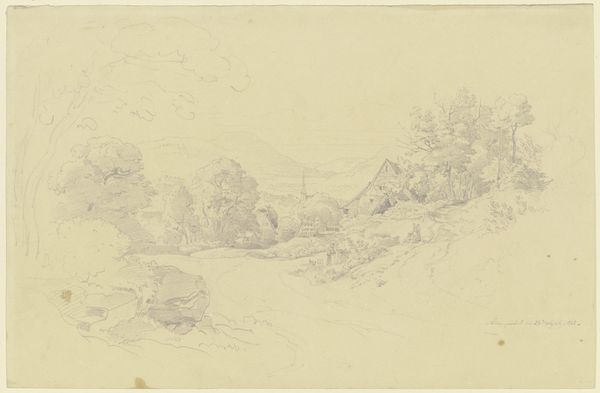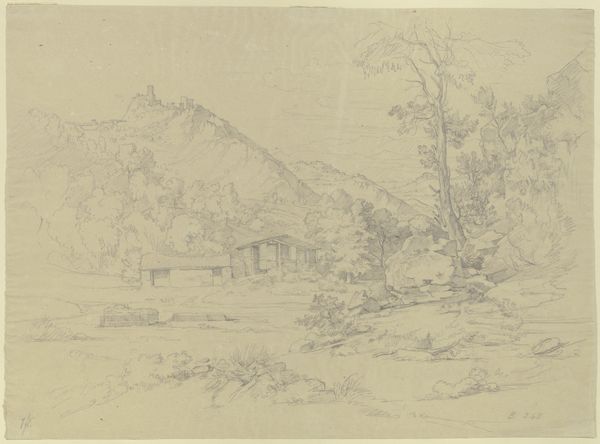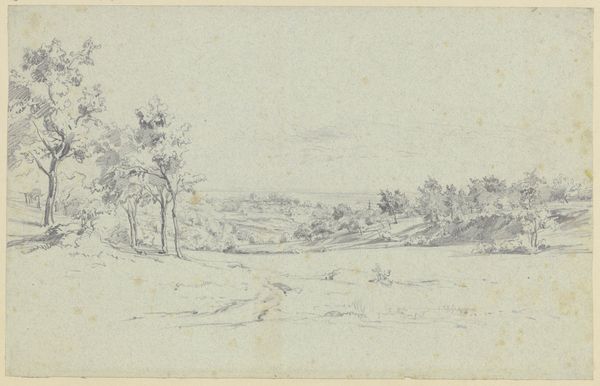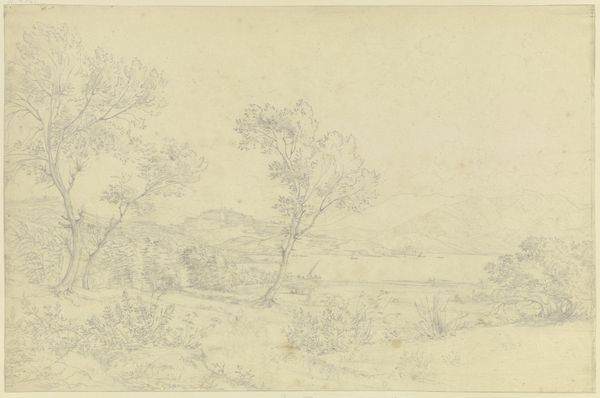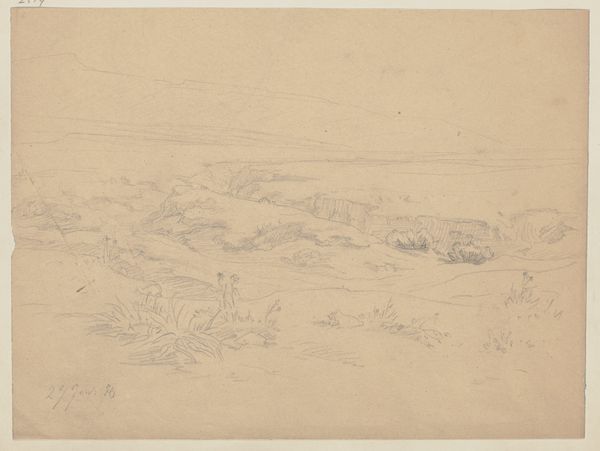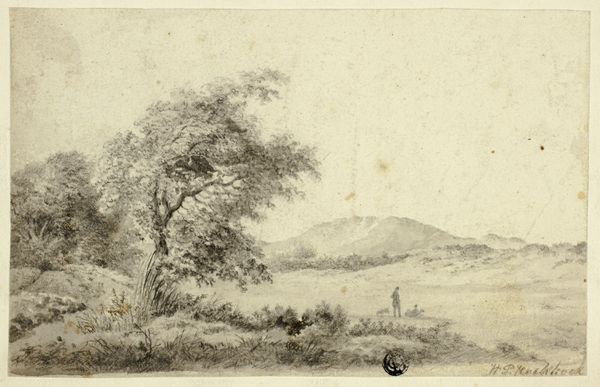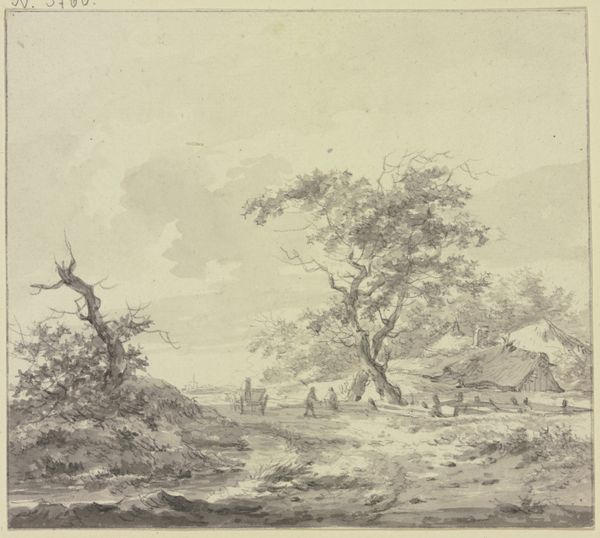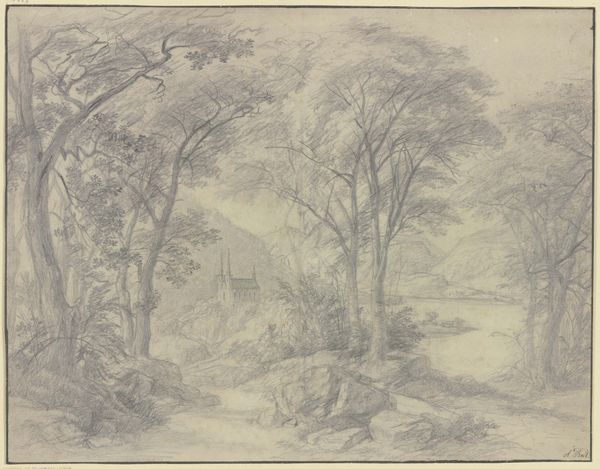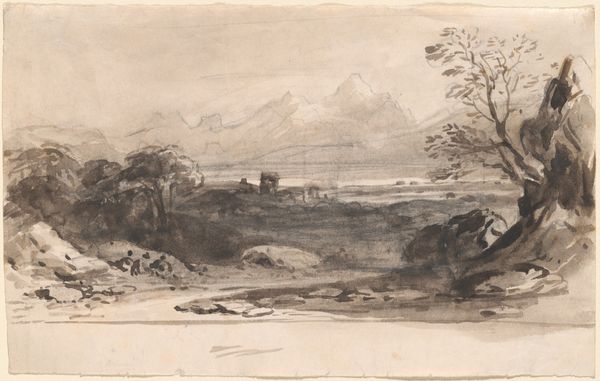
drawing, pencil, graphite
#
drawing
#
pencil sketch
#
landscape
#
romanticism
#
pencil
#
graphite
Copyright: Public Domain
Editor: This is "The Gulf of Naples," a pencil and graphite drawing from 1835 by Carl Morgenstern. There's a wonderful serenity to the sketch, but also a kind of topographical precision in the layering of elements from the foreground towards the more distant cityscape and mountain. What stands out to you? Curator: The linear quality dominates this work. Observe the way the artist employs hatching and cross-hatching techniques. These strokes create depth and volume, while varying line weights accentuate texture – notice how the foliage and the contours of the land are differentiated. Consider the tonal range achieved purely through the manipulation of graphite. Editor: That's a very detailed approach! The way you see it, do the trees act as more than just… trees? Curator: They certainly do. Trees provide more than simple adornment. Their sinuous lines serve to guide the viewer's eye, creating compositional balance in relation to the cityscape itself. Moreover, they frame and define the scene, thereby functioning as structuring devices. Do you perceive how their placement contributes to an overall sense of order? Editor: I think so! The more I look, the more the organic shapes direct my eye towards the buildings nestled beneath Vesuvius. Before, it seemed almost haphazard, but now I see it's carefully arranged. Thanks! Curator: The application of semiotic principles refines perception. The relationship between form and content, between structure and feeling… it is the key to a deeper understanding of Morgenstern’s artistry. Editor: I'll be sure to apply that in the future, too. What a captivating way to consider this artwork!
Comments
No comments
Be the first to comment and join the conversation on the ultimate creative platform.
